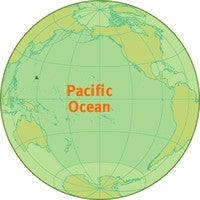
Characterized by below average surface water temperatures in the equatorial Pacific Ocean, La Niña typically affects the western United States and Canada by bringing dry winters to the Southwest and cold, snowy winters to the Pacific Northwest mountains.
“La Niña is expected to last at least into the Northern Hemisphere spring 2011,” the Surfersvillage report said. “A large majority of models also predict La Niña to become a strong episode by the November-January season before gradually weakening.”
How will this affect you? Be sure to see The Weather Guide in the November issue of şÚÁĎłÔąĎÍř for more information on La Niña, El Niño, and all things meteorological with our expert primer on sun, wind, snow, and rain.
–Michael Webster
Photo from on Flickr